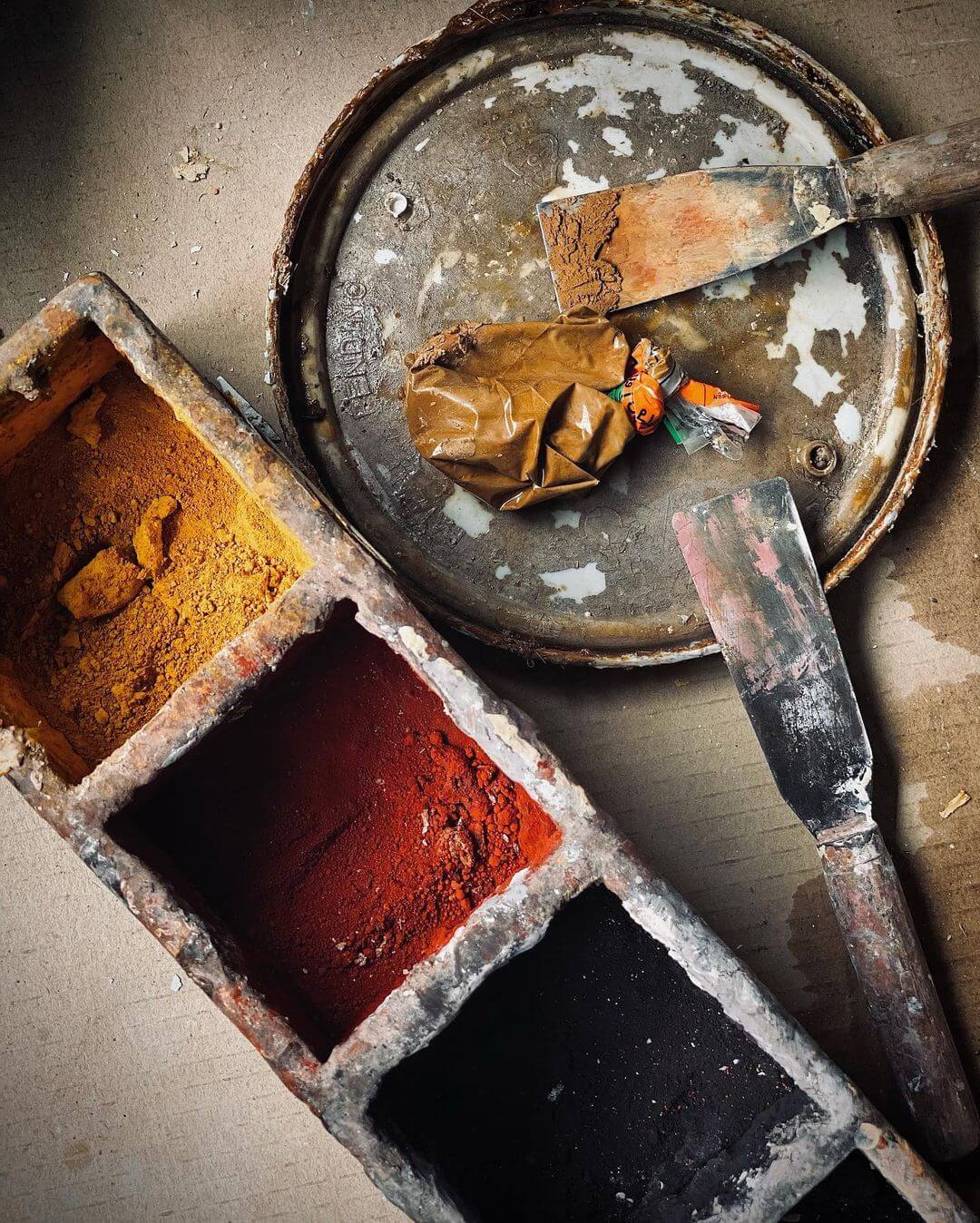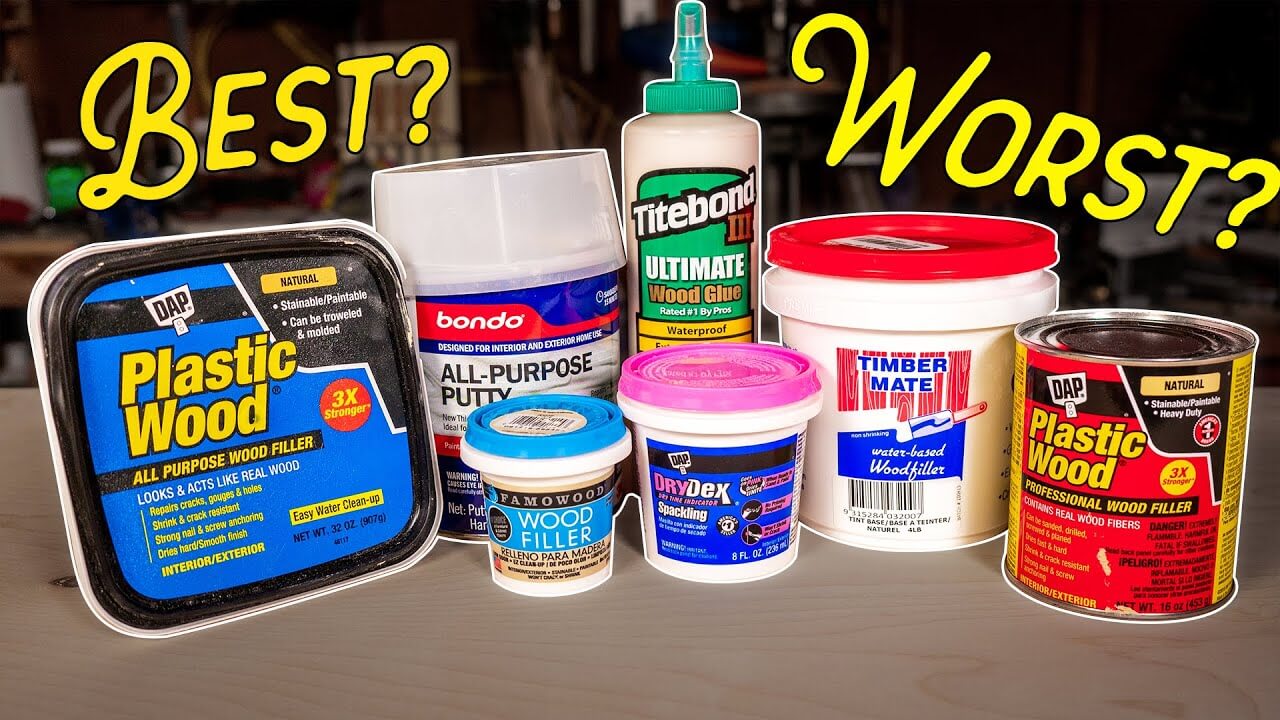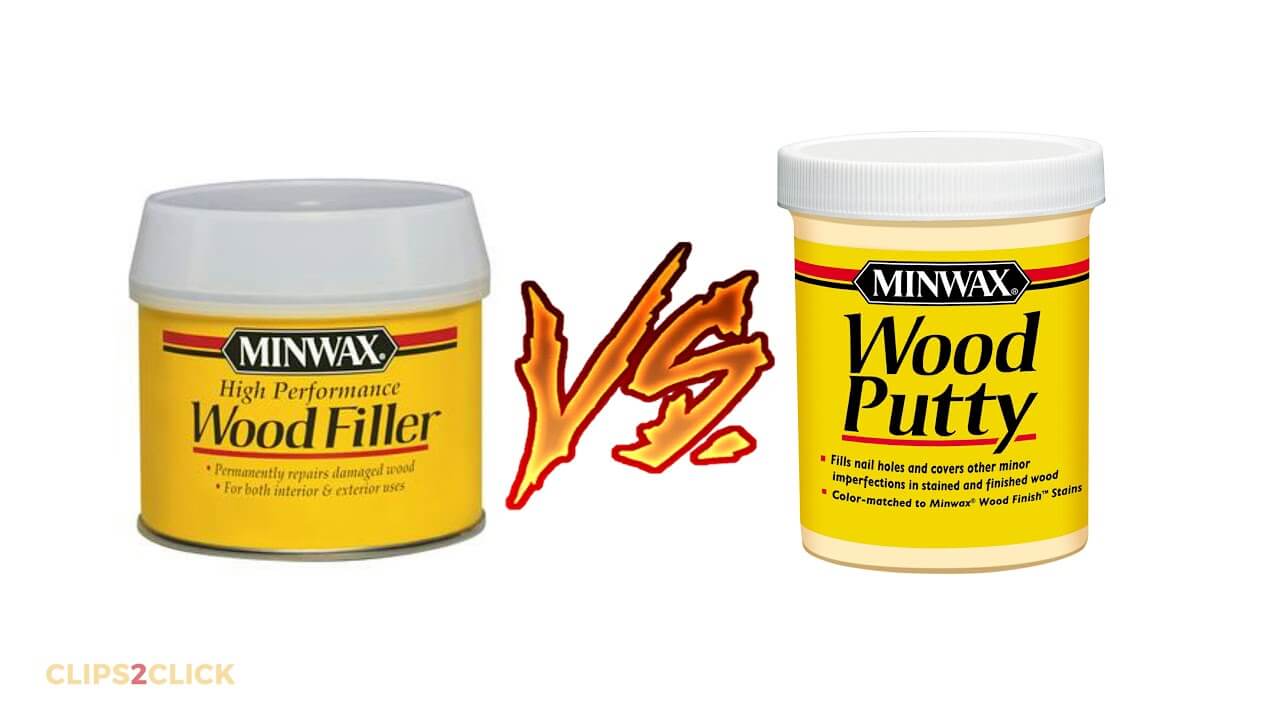Wood Putty vs Wood Filler: When and How to Use Them
Wood putty is a flexible substance that you can apply to finished wood surfaces or furniture. Wood filler is a fast-drying substance that can work better for interior and unfinished wooden projects. The third kind of substance, called wax filler, can work for finished wood in a quick and nearly effortless manner.
It can be difficult to figure out which one you should choose since these materials seem to serve the same purpose. However, it is crucial to understand the difference between them so that you can use them in the correct manner and application.
Through this comprehensive guide, you can go through a thorough difference between wood putty and wood filler and wax filler. We’ll talk about their pros and cons, and how they compare with each other will become more apparent to you through the following sections.
Wood Putty vs. Wood Filler vs. Wax Filler: What’s the Difference?
Wood putty, wood filler, and wax filler are all used to repair and hide cracks or blemishes on wooden surfaces or products. For this reason, confusing them to be the same kind of product can be too easy and can often lead to huge blunders in your project.
There are several ways in which the three actually differ. For instance, while wood putty is made from plastic and oil, wood filler actually includes the byproducts of wood in addition to epoxy resin. Wax filler, on the other hand, is made from blended wax.
An important distinction to note here is that wood putty and wood filler are more permanent solutions, while wax filler usually only serves a temporary function until you can manage to carry out a more thorough repair.
The uses and applications also differ quite a bit, with wood putty being used to fix cracks or holes after the staining process has already taken place. Wax filler also works better with finished products, whereas wood filler is more useful for unfinished projects that you can sand and stain later.
You can also use wood filler for grain filling.
What Is Wood Putty?
Wood putty is a dense material that looks like clay. It is also commonly referred to as plastic wood. Several materials go into making wood putty, although the main ones include plastic and oil substances, resulting in a pliable and flexible structure.
Wood putty can be ideal for making some kinds of repairs and fill-ups in a finished wood project, such as an old piece of furniture that you want to spruce up again. By binding itself to the wood, it can provide it with a renewed appearance while also effectively sealing the surface.
This wood putty can take quite a while to dry.
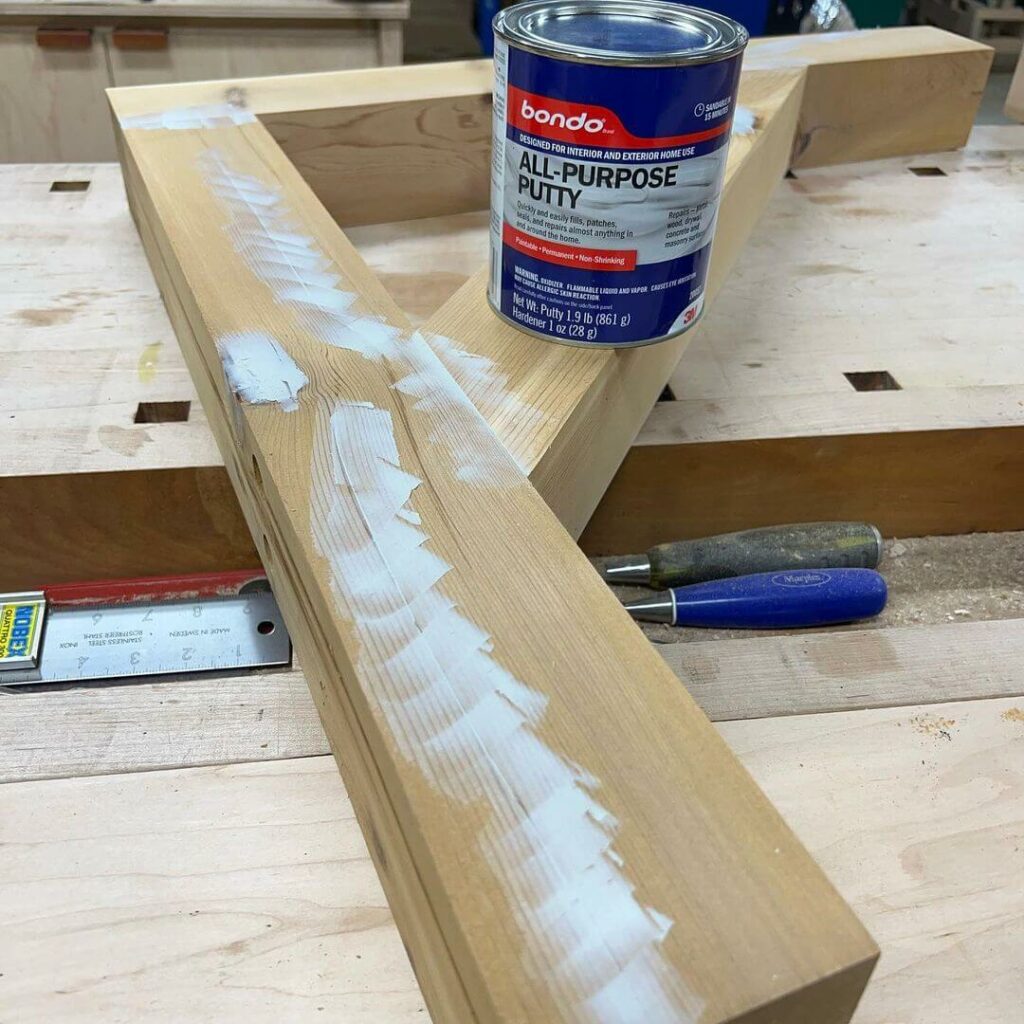
Wood Putty Applications
You should primarily use wood putty if you notice some holes, dents, cracks, gaps or unevenness after completing the structure, including staining, painting, and sealing.
You can use wood putty even after multiple years of using a piece of furniture or other wooden surface or product (such as a wooden floor or deck). For instance, wood putty can be a great option if you want to make repairs or bring the piece back to life.
Both interior and exterior projects can benefit from wood putty.
Pros
Cons
What Is Wood Filler?
Wood filler is a substance made from resin and contains actual wood byproducts, such as fiber and sawdust. By applying this to wood, you can carry out some repairs in which the filler will completely end up binding to the fibers of the wood. This can result in a nice finish that can make your project look brand new.
Wood fillers usually have an extremely quick drying time. Once they dry, they also tend to harden up completely, making it possible to add some elements like paint or sealants on top of them.
These wood fillers are only available in a neutral color.
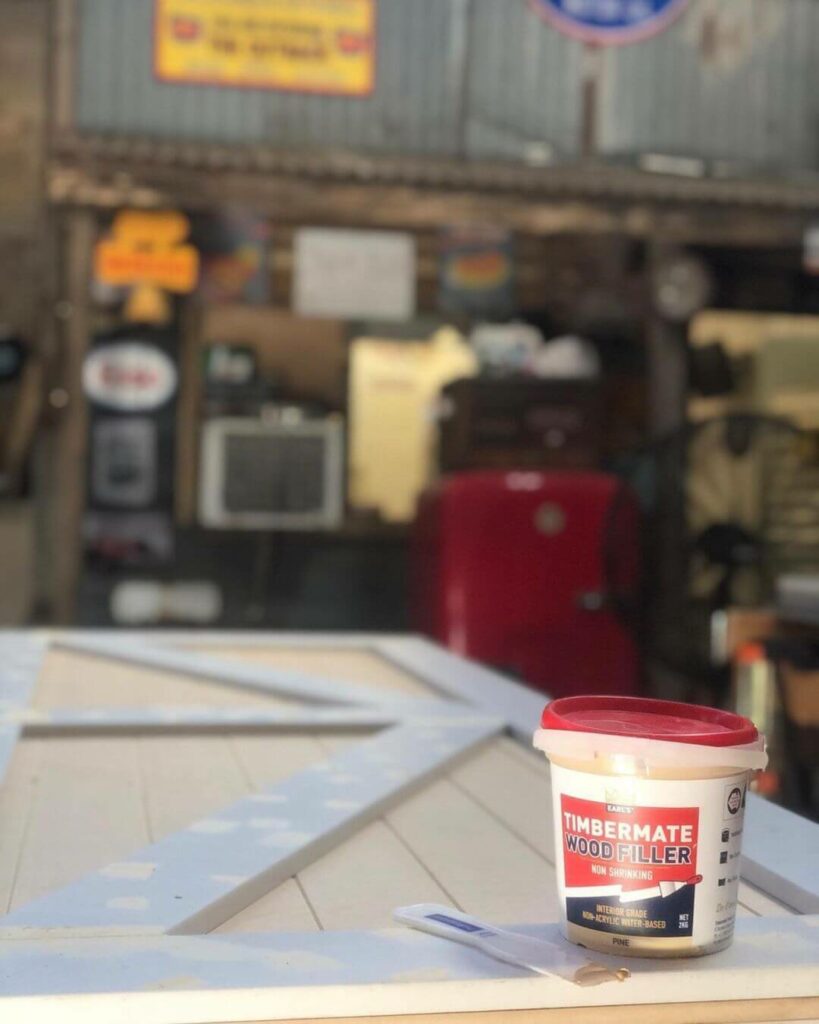
Wood Filler Applications
Since wood filler tends to fully harden up after it dries, it can be better to use it to carry out repairs on unfinished projects that still require some additional work. If you notice some gaps, holes, cracks or spots requiring grain filling, wood fillers are the right options to try out.
Additionally, the wood filler can work well for nail holes, dents, gouges, joints, and borders, among others.
After it hardens, you can also sand the surface, after which painting and sealing are possible too. This kind of wood filler can work better for interior wood surfaces and furniture where expansion and contraction of the wood are relatively uncommon.
Pros
Cons
What Is Wax Filler?
Wax fillers generally come in the form of blended wax sticks that you can then make use of for repairing some gaps or cracks in the wood.
These sticks are quite simple to use since you can simply remove a small piece, shape it and insert it into the given spot.
Make sure you fill the gap or crack up so that you can then ensure a more natural appearance. Let the wax filler harden up so that you can then complete the repairing process.
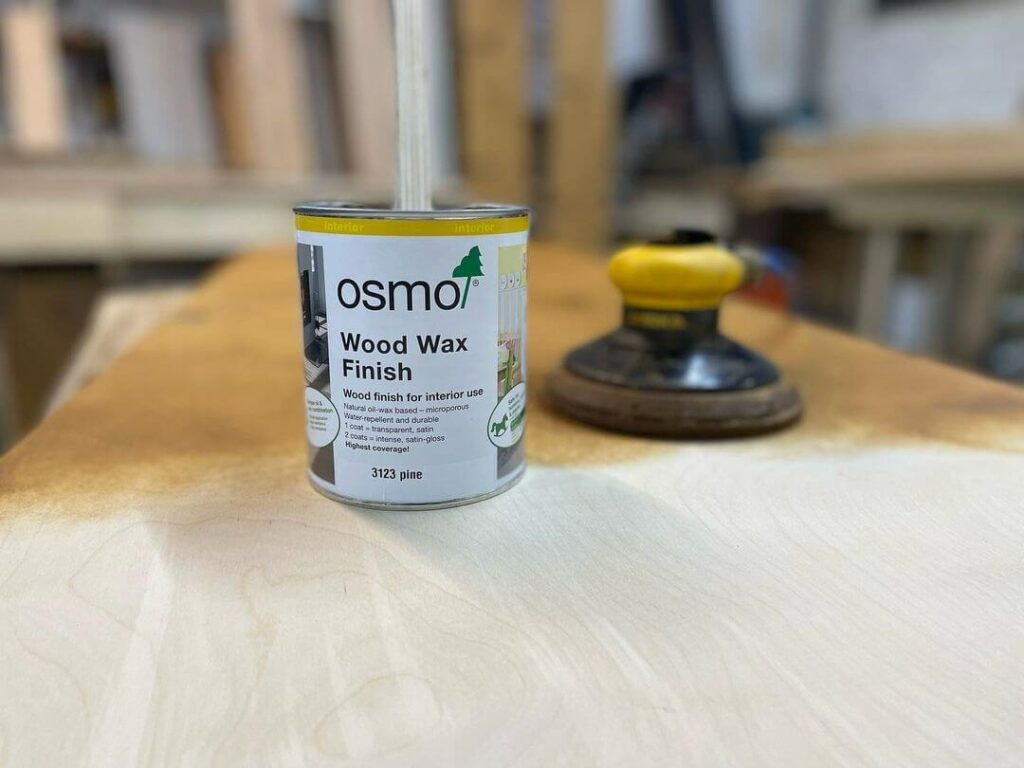
Wax Filler Applications
You can make use of wax filler mainly for small gaps, holes, dents, and cracks in finished woodwork, including old furniture.
This can help you fill and cover the issue for a while before you can find a more permanent solution to the problem.
A useful feature of these wax filler sticks is that you can also apply them to your project before you finally seal or stain it. Floors, decks, cabinets, doors, and other surfaces can benefit here, although the filler stick can perform better in smaller structures.
Pros
Cons
Which Is Better, Wood Putty or Wood Filler or Wax Filler?
Now that you are aware of the features, applications, pros & cons of wood putty, wood filler, and wax filler, you should move on to a few points of differences between them to understand which one can work better for your requirements.
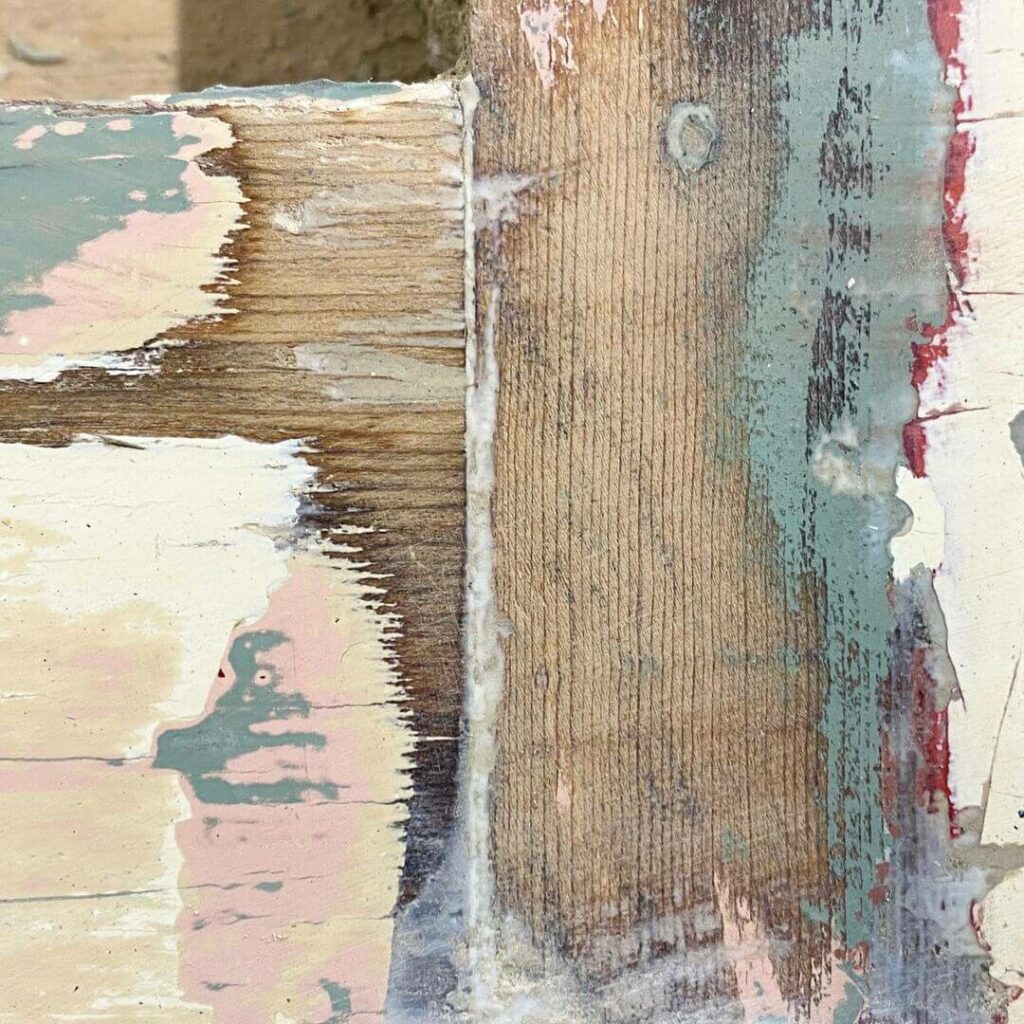
Ingredients
Wood filler is the only substance actually made from wood, which is why it can look quite natural without damaging raw wood.
It includes resin for the binding function along with sawdust and fibers, among other elements like cellulose.
Wax fillers are made from blended wax, while wood putty is made from a combination of plastic and oil solvents. For this reason, the latter creates a good seal and takes quite some time to dry.
Drying Time
Wood putty takes the longest to dry due to its ingredients and properties. You will likely need to leave it out for a couple of days after application to start using the piece again. Even then, it will never harden up.
On the other hand, a wood filler can take as little as a few hours to dry, with some applications also taking merely a few minutes. Larger projects can take up to 24 hours.
Wax fillers dry within a matter of minutes.
Consistency
Wood putty has the consistency of clay, making it malleable and easy to shape. You can use a stick or knife to spread it or you can simply buy putty sticks.
On the other hand, wood filler tends to resemble paste more than clay, requiring a knife or spatula to carry out the application process.
Wax filler is similar to wood putty but slightly stickier due to its wax base. This can make it easy to shape as well.
Color Factor
You want your wooden surface to look uniform in color, which is why you should opt for an option that provides sufficient choice.
Wood putty can be the ideal choice for this, especially for more permanent results, although wax fillers can work too, if you are dealing with minor repairs.
Wood fillers come in a single neutral color and might require tinting before applying them, which can end up increasing the overall cost and effort of making the preparations.
Cost Factor
If you have a given budget in which to carry out the repairs, you should definitely consider the cost of which substance you buy.
In many cases, you might find that wood putty costs you slightly more at the time of purchase, while wood fillers and wax fillers are more affordable.
However, when you also take costs in the long run into account, you can benefit more from wood putty since it is highly durable and does not require much replacement as compared to the other two options.
Hard vs. Pliable
The only material that becomes fully hard after drying is the wood filler. This can make it possible to stain, sand and paint it after sealing while also reducing the waiting time.
Wax filler holds the middle ground here since it is a bit more pliable as compared to wood filler, although hard wax is also an option here.
Wood putty is the most pliable and malleable, which might take it longer to dry but can also make it more durable and versatile after applying it to finished wood.
Interior vs. Exterior
Wax fillers can work for both interior and exterior projects but can work better indoors. They are also ideal only for smaller repairs.
Wood putty can work for both too, and can be ideal for exteriors since it can expand and contract with the wood in tune with the changes in the weather.
Wood filler usually does not respond to such weather changes too well, which is why you should use it for interiors.
The Bottom Line
Ultimately, wood putty, wood filler, and wax filler are all reliable solutions to fill holes and fix imperfections in your woodworking projects.
For finished and exterior projects, you should use wood putty, whereas wood filler can work better for unfinished woodwork. Although you can use wax filler for both, it might not have the same effect in the long run.
Make sure you account for your own requirements, resource and time restrictions, and the desired look before you make a choice.

